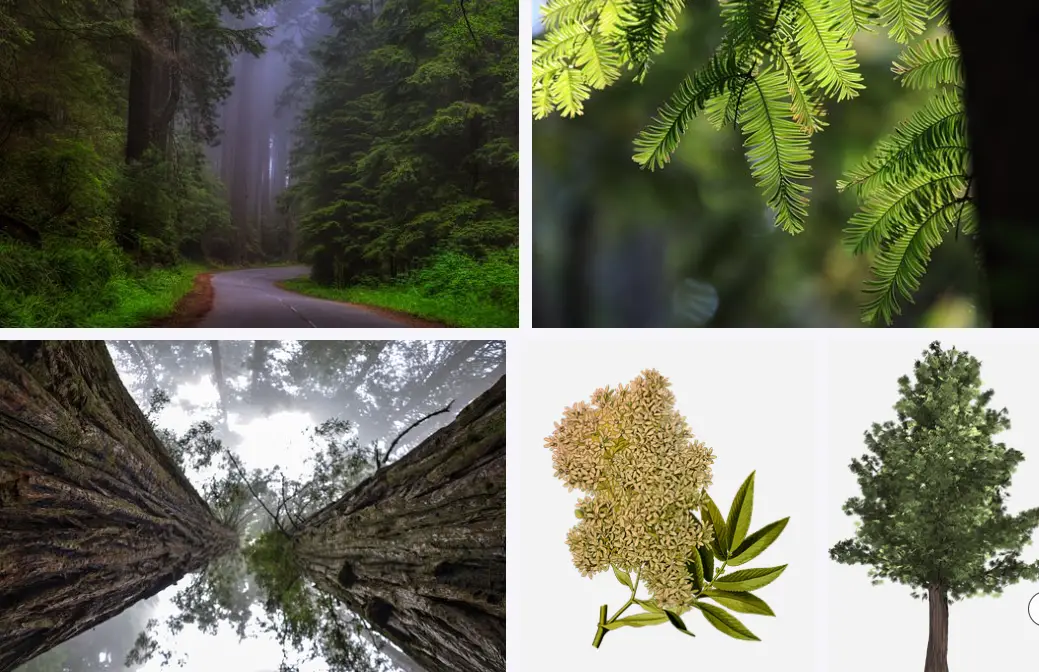Why are redwood trees so big?| How tall are redwood trees?

- By
- Aparna Patel
- |
- 8 Mar, 2023
- |

Welcome to my blog about the fascinating and awe-inspiring redwood trees! These majestic trees are among the tallest and oldest living organisms on Earth, and they have captivated the imaginations of people for centuries.
In this post, we will explore some interesting and surprising facts about redwood trees, including their size, lifespan, and ecological significance. So, get ready to be amazed by these incredible giants of the forest!
Redwood trees are so big because they have evolved to be extremely efficient at capturing and storing sunlight, carbon dioxide, and water. Here are a few key reasons why redwoods have become some of the largest trees in the world:
Adaptations to the environment:
Redwoods have adapted to their environment in several ways. For example, their tall, straight trunks allow them to reach up above the surrounding trees and capture sunlight.
They also have very thick bark that protects them from fires and insect damage, and they can regenerate new growth from their burls (swollen areas on the trunk).
Ability to photosynthesize efficiently:
Redwoods are able to photosynthesize (convert sunlight into energy) very efficiently, thanks to the chlorophyll in their needles. Additionally, they have a high leaf area index (the amount of leaf area per unit of ground area), which allows them to capture more sunlight than other trees.
Efficient water transport:
Redwoods have a very efficient system for transporting water from their roots to their leaves, thanks to their specialized root systems and a network of tiny tubes called xylem. This allows them to access water from deep underground and transport it to the top of the tree.
Long lifespan:
Redwoods have long lifespans, with some trees living for over 2,000 years. This allows them to grow slowly and steadily over time, without being limited by a short lifespan.
Overall, the combination of these adaptations and characteristics has allowed redwoods to become some of the largest and most impressive trees in the world.
How tall are redwood trees?
Redwood trees, also known as coast redwoods (Sequoia sempervirens), are some of the tallest trees in the world. On average, mature redwood trees reach heights of 200 to 240 feet (61 to 73 meters), but some trees have been known to grow as tall as 379 feet (115 meters).
The tallest known living coast redwood, called Hyperion, located in Redwood National Park, California, stands at 379.7 feet (115.7 meters) tall as of the latest measurement in 2017. In addition to their impressive height, redwoods can also have massive girths, with some trees measuring over 30 feet (9 meters) in diameter.
Read more about redwoods
- Why are redwood trees so big?| How tall are redwood trees?
- What is Redwood National Park famous for?
- What city are the redwoods in California?
- Why do redwoods only grow in California?
FAQ
Q: Why are redwood trees so big?
A: There are several factors that contribute to the impressive size of redwood trees, including:
Genetics: Redwood trees have evolved to grow very tall as a way to compete for sunlight in their crowded forest habitats.
Climate: The coastal fog and mild temperatures in the regions where redwoods grow provide ideal growing conditions for these trees.
Soil: The nutrient-rich soil in these regions helps redwoods grow quickly and tall.
Adaptations: Redwood trees have several adaptations that allow them to grow to such impressive heights, such as a thick bark that helps them resist fires, and shallow root systems that spread out widely to anchor the tree.
Q: Where do redwood trees grow?
A: Redwood trees are native to the coastal regions of California and Oregon in the United States. They are also found in several parks and reserves in these regions, including Redwood National and State Parks.
Q: How tall can redwood trees grow?
A: The tallest known redwood tree is over 380 feet tall, which makes it one of the tallest trees in the world. On average, redwoods can grow up to 200-240 feet tall.
Q: How old can redwood trees get?
A: Redwood trees can live for thousands of years, with some trees estimated to be over 2,000 years old. The oldest known redwood tree is over 2,200 years old.
Q: What are some of the uses of redwood trees?
A: Redwood trees have been used for a variety of purposes, including construction, furniture making, and even as material for musical instruments. However, due to conservation efforts, logging of redwood trees has been heavily restricted in recent years.
Search Posts
Latest posts
-
5 Mar, 2024
Passing through airport security with autism
-
4 Mar, 2024
How can I do a "broad" search for flights?
Popular posts
-
4 Mar, 2024
Why are there no seat belts on trains?
-
5 Mar, 2024
Why prohibit engine braking?
-
5 Mar, 2024
How to avoid drinking vodka?